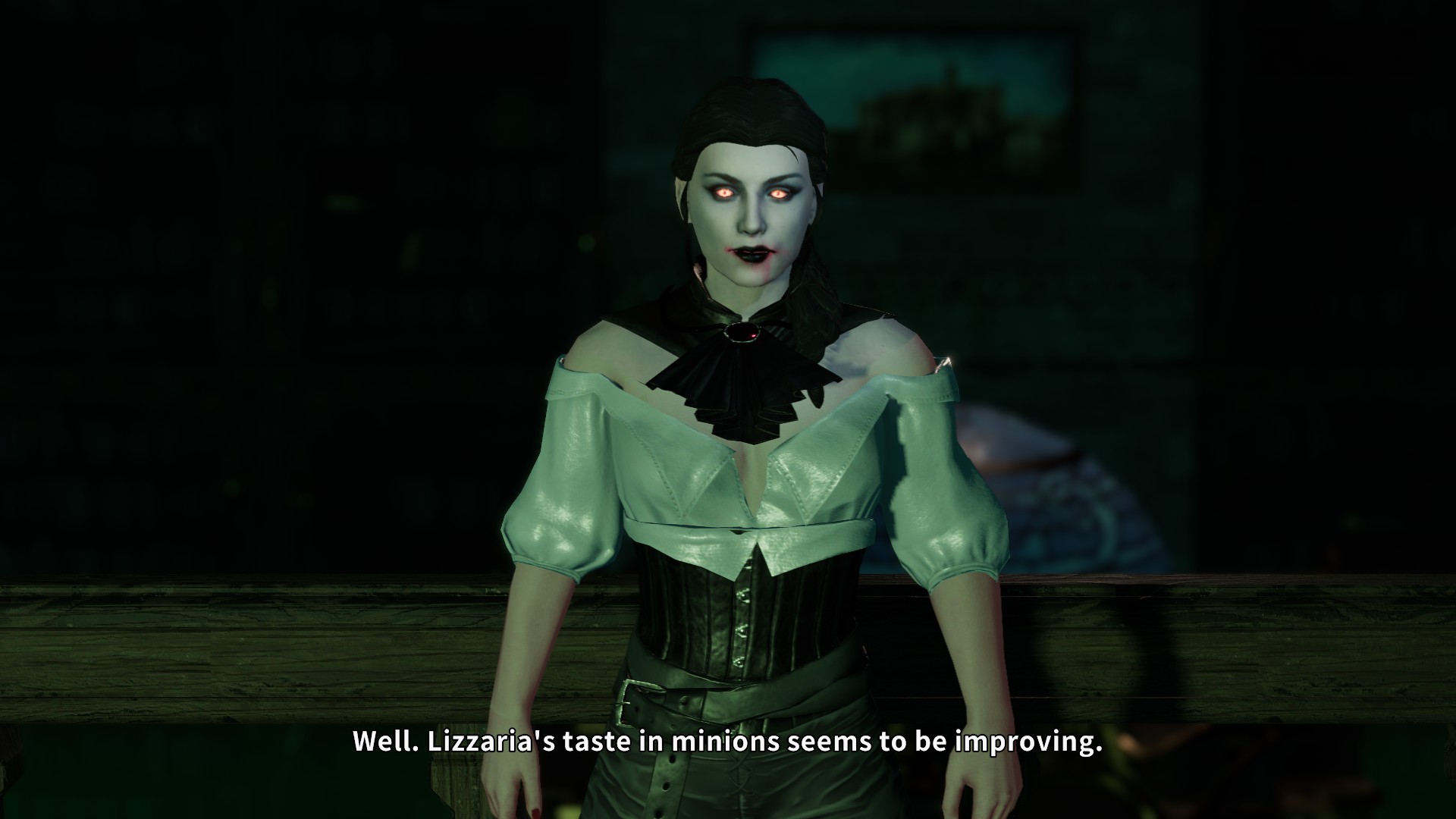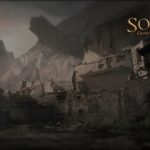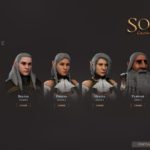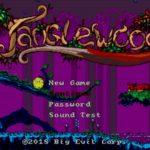I am done with the early access content in Solasta: Crown of the Magister. I think Solasta did what it set out to do. It made a statement about how it would approach the modern era of D&D computer RPGs and how it sets itself apart from other modern offerings such as Pillars of Eternity, Divinity: Original Sin and Baldur’s Gate 3. And it made me eager to see what comes next.
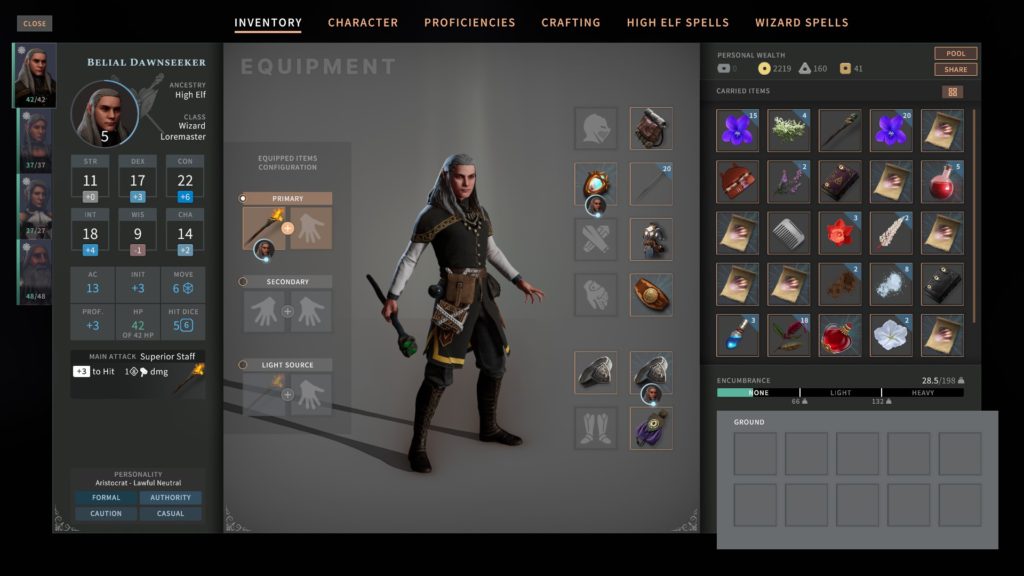
Compared to the other games mentioned, Solasta doesn’t rely much on its story to move things forward. It does have a story, something that wasn’t clear until the last dungeon of early access, the Dark Tower. There’s not going to be any intra-group romances. You’re not going to be the chosen one. In fact, there’s no main character you can point to and say that that is your avatar in the game, as you create, name and control all four permanent members of your group.
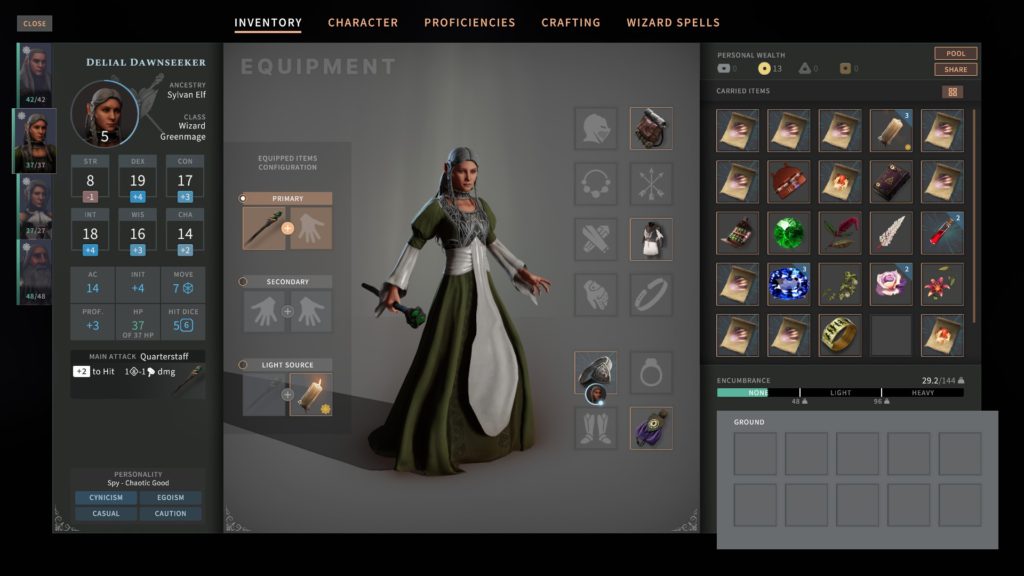
The wide variety of backgrounds and attitudes to some extent makes up for the lack of classes and races; this is very barebones D&D, without warforged or dragonkin or tieflings or half-orcs. You’ll get only humans, elves, half-elves, halflings and dwarfs and like it.
No monks or artificers or warlocks or sorcerers either; your classes are limited to cleric, fighter, paladin, rogue, ranger and wizard. (When a Defiler shows up, none of the characters think to wonder what a defiler might be, so there’s clearly other classes abroad in the world).
There’s also no mechanism for multiclassing or changing classes. Nor are there endless options for customizing your character’s looks and outfits. This is very much an old school D&D implementation.
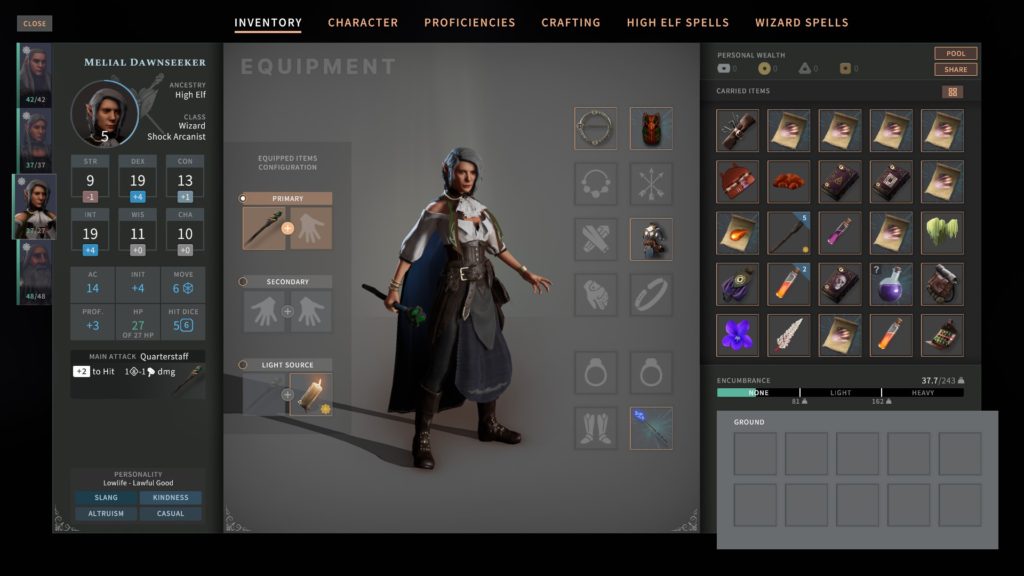
The focus in Solasta is very much to get your party into a dungeon as quickly as possible. A nicely framed retelling of how your party met up together at a bar provides a tutorial through all the basics, and then your party is nearly immediately sent off to the first of the three dungeons in early access.
Overworld travel is via a map, where icons representing your party walks along the road. A constantly updated log tells what your characters are doing as they travel — hunting for food, resting, making surprise feasts, crafting spells and potions, meeting fellow travelers and so on.
Occasionally the party will hit a random encounter, which drops you into one of three “road battle” maps. If you were not surprised, you’ll often have the chance to hide and let the encounter pass, but they are typically worth doing, as these encounters are one of the few places you can really use all your spells and abilities without concern, as you’ll be getting them all back via a long rest as soon as you are finished.

My party was three wizards and a cleric. Each dungeon was a race to get through before running out of spell slots. A short rest would sometimes allow the recovery of a slot or two, or the opportunity to spend hit dice to save the cleric some healing.
I eventually understood that I needed to get a lot more serious about crafting. Crafting is fairly simple; you buy a recipe that is then available to everyone in your party from then on. You discover crafting ingredients in dungeons or while traveling. You then press a button and go; eventually that character will produce an item, if they have the skills.

I encountered an amusing bug where items crafted on the road didn’t take any ingredients. The final boss fight in the final dungeon puts you in a place where you have to get through three to four encounters without a chance for a long rest. (You can skip the final encounter through persuasion, if you’re lucky and don’t need the 900xp you get for finishing it). As such, I decided to hoard my spell slots by crafting magic missile scrolls and healing potions. I had enough ingredients for about eight of each. I arrived at the final dungeon with everyone’s inventories stuffed full of scrolls.
A more annoying bug was one where, my first time through the dungeon, I couldn’t save once I was in the gauntlet area. I thought this was intentional, and it meant every try at the boss was another half hour of starting from the start and working my way back. The next time I played, I could save after every encounter, and was able to save scum my way through the persuasion checks.
I didn’t want to succeed at this particular persuasion check, as the first time around, with hours spent retrying the gauntlet and final fight, I wanted to bring the boom.
Cleared dungeons don’t repopulate, but it’s possible to grind the overland random encounters, and so I did, bringing my characters from level 4 to 5 and giving all four of them (and yes, even the cleric) access to FIREBALL. My aim from the start with this group was to BRING THE BOOM, with the theory that superior firepower would make up for the lack of any real melee or tanking ability.
A bug with the AE targeting system meant that, in the final fight, I couldn’t position the AE effect precisely where I wanted, meaning some characters would be inside the blast radius.
Some of them may have die, but that was a sacrifice I was willing to make.
Frustratingly, I passed the persuasion test twice before finally angering him enough to make him attack, and then I cleared the room with fireballs. And healed the two wizards who were either caught in the blast or cut down by enemies (or in Belial’s case, both).
Melial, the wizard whose background gave her some experience with thieve’s tools, still required a boost from Parnad to pass the roll to get into the Master’s stash.
I collected all the loot I could, went outside and completed the ghost’s quest as much as I could, and went to head back to the city and…
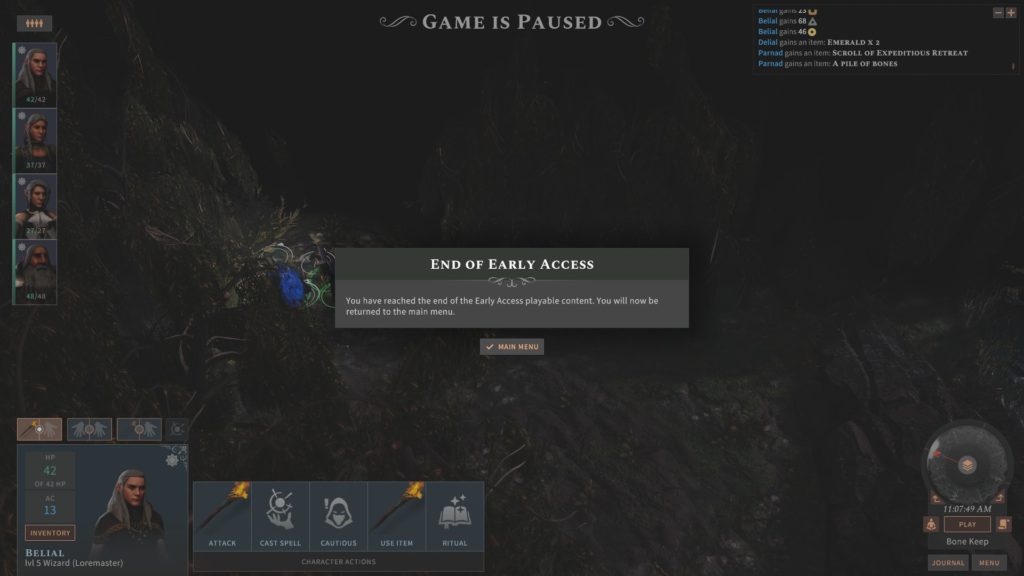
So that was the end of Solasta’s early access. The story had finally begun, but I won’t spoil any of it here.
Solasta: Crown of the Magister is a very old school implementation of a D&D campaign as compared to Baldur’s Gate 3. If I was forced to make a comparison, I’d say it reminded me quite a lot of Curse of the Azure Bonds, one of the best of the “gold box” SSI AD&D games from the 80s/90s.
Solasta is based on the fifth edition rules, not the Advanced Dungeons & Dragons rules, but the level of interaction is the same. You won’t be pouring oil on enemies and setting them aflame in this game.
Where Solasta shines is in its puzzles. In the Tower of Magic, you explore verticality in a dungeon that has been burst asunder by magic, with much of the dungeon floating in the air around you. In the Bone Keep, a teleportation maze leads you through the solution with mysterious icons that bring to mind a famous Konami code…
Each dungeon keeps its encounters fairly consistent, so it’s easier to bring the spells you know you’ll need for the run. For instance, a dungeon of mostly undead stays true to its theme, so you can put the Sleep spells (normally so overpowered) aside and focus on better things.
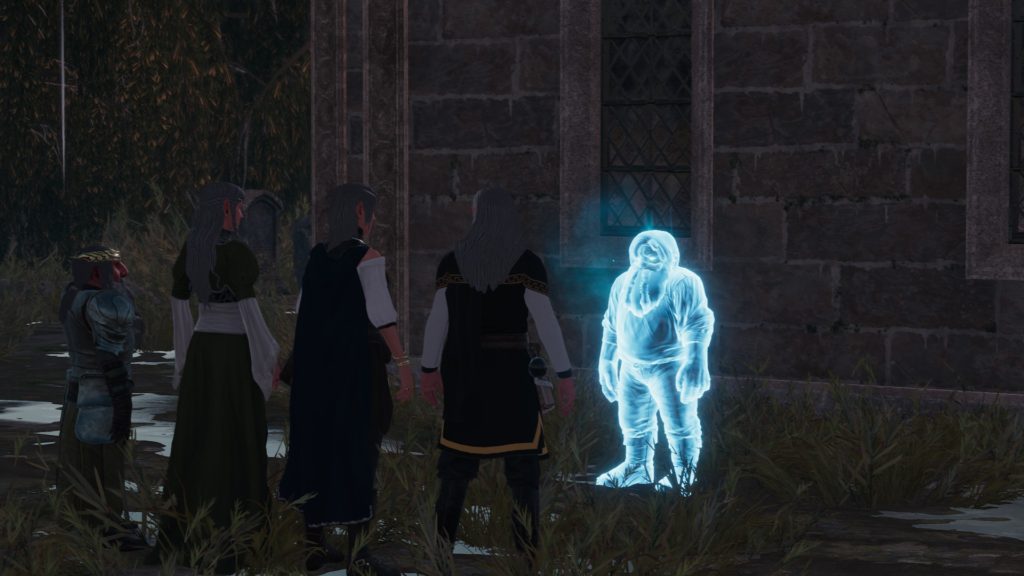
My characters all ended at level 5, the point where most classes start coming into their class defining abilities. (See: Fireball). All my characters had at least one magic item. By bringing back artifacts to city factions and selling them to them, I had more money than I really knew what to do with, so I went on a magic item buying spree. There’s very little else to buy.
I’m looking forward to playing more of the game as it’s released 🙂 I won’t be deleting this off my hard drive anytime soon.
